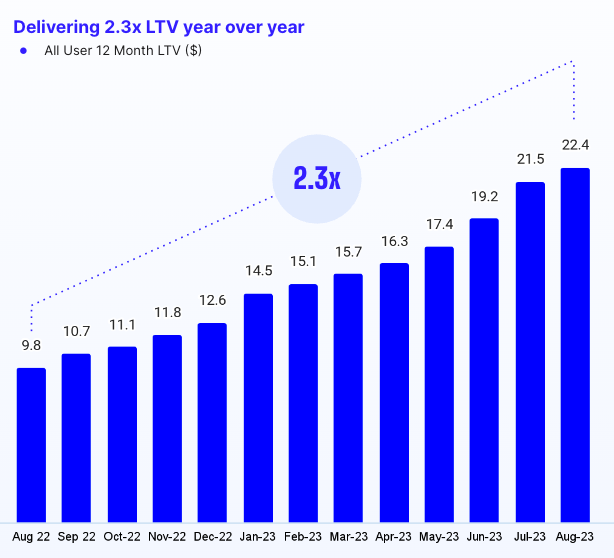Personal Financial Management can work?
Cleo applies the Fintech Playbook to scale to $88m revenue
Personal Financial Management is an incredibly difficult category. Dozens of startups have failed in the noble mission of helping people understand and manage their finances.
People simply aren’t willing to pay much for a product to help them manage their spending, and products struggle with retention for the same reason gyms do — people have good intentions but don’t follow through.
It’s also very difficult to attract customers at a low enough Customer Acquisition Cost (CAC) to make the unit economics work from a payback and LTV perspective.
That’s why this trading update from Cleo is so impressive:
Not only are they growing revenue rapidly at scale, but they’re improving margins in the process and are close to EBITDA breakeven:
How did they do it?
In my Square deep dive in 2020 I wrote about the fintech playbook:
Get Unit Economics Working
Become a Daily Habit
Bundle
Proprietary data + ML = New Lending Opportunities
Cleo has followed exactly this playbook.
Get the Unit Economics Working
The key to getting unit economics working for a product people aren’t willing to spend much on is to acquire customers extremely cheaply.
Cleo has achieved this by creating a chatbot people find hilarious. Their sassy and direct tone of voice appeals to their consumer.
Enter “roast mode”:
Users screenshot the roasts and share them on socials, driving virality. In the early days, the vast majority of users joined organically and even at scale, six years later, Cleo acquires 40% of users for free.
This article suggests CAC payback was “comfortably under 12 months” in 2020 and they’ve improved since then to <6 months in 2023.1
Become a daily habit
While I can’t find daily use or churn stats, the Google Play store listing suggests Cleo has 5 million users, implying a 10% conversion rate to paid subscribers, which is high for a consumer freemium product (avg is ±4%). From the trading update, adding direct deposits has doubled retention and led to higher spend.
Bundle
Cleo started as a freemium product, offering basic spend management tools for free while offering paid subscriptions for extra gamification and credit scoring.
Over time, they’ve added in extra revenue streams including their Credit Builder subscription and Cash Advances which help improve LTV and cohort paybacks:
This is the kind of cohort chart VCs love:
Proprietary data + ML = New Lending Opportunities
Cleo is taking advantage of its proprietary data and ML capability to offer cash advances to users. By adding “express sloping”, they can offer higher advances to top decile users, increasing ARPU without impacting arrears.
With cost of living pressure affecting young people globally, it’s encouraging to see a product that can meaningfully help people manage their finances do so well both operationally and financially.
It’s not clear if they’re measuring LTV on Revenue or Contribution Margin - we’d prefer to see CM given it shows the actual amount you can pay back CAC with when you account for cost to serve. Even if you adjust for a 59% CM, it still looks like ±1.6x CAC Payback in 12 months












Hi Jax, thanks for this thoughtful post. I'd be interested in your reflections on Block/Square's recent performance. Cheers.